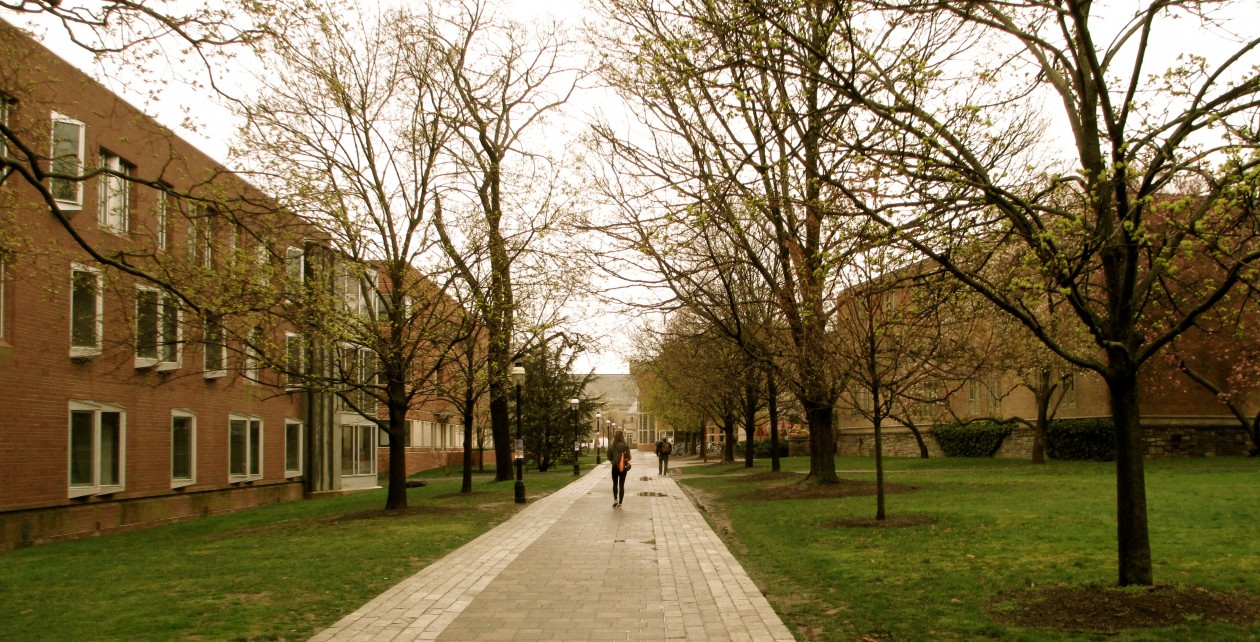Sunday, April 26, 2015 marked the 45th annual “Communiversity” town and university arts festival, organized by the Arts Council of Princeton. As part of our first major outreach program, the Society for Princeton Urbanists hosted a booth and asked visitors the question, “What Makes an Ideal City?” Respondents wrote down their answers on large index cards. The results of our very unscientific survey were quite interesting. Some answers were very location-specific, calling to mind the place that embodied their ideal city. Others cited a variety of criteria, while some of our younger respondents had more ‘artistic’ answers. Above all, respondents cited “friendliness” and “people” the most frequently. After all, to quote Shakespeare’s Coriolanus, “What is the city but the people?” In this post, we’ll summarize the results of our survey.

Metadata
We had over forty respondents fill out cards and many more visit our table. From our responses, we first used a Word Cloud to display the most commonly invoked terms to describe the respondents’ ideal city. As you can see by the below graph, some of the most common words used were “people,” “water,” “open,” “public, “friendly” and “food.”

After doing this preliminary investigation, we grouped the terms into categories, conflating similar terms like “friendly” and “friendliness,” for example. Click on the graph below to see a frequency bar graph of our 26 categories. In this analysis, the most popular key terms to describe an ideal city were “friendly,” “people,” “Parks/Nature,” and “Location-based,” meaning the car referred to a specific place. In collecting this data, we gave a point to a category if a card mentioned something that fit the category, so if a card described things that fit multiple categories, it counted for each category it referenced.

To see another view of this data, check out the “radar” graph, which offers a different perspective of the strength of the term in terms of its representation in the survey.

Now, we’ll move on to look at some of the categories in detail, as well as some of the most used cards and specific responses.
Location-based

Some responses concerned the places people thought were ideal cities. This one is pretty Princeton patriotic. Some others:
“San Francisco, CA—Good Weather”
“Taoguan, Taiwan; very convenience.”

Water

Water was of deep concern to a few people. Some were more descriptive than others:
“Solar water pump in skyscraper pushes water to the top floor during the day, releases water to fall downward at night spinning a water wheel to make electricity.”

Friendliness
Friendliness, as one of the most common responses, seemed to be a shared theme.
“Colorful, cozy, affordable and dense living with a great public transportation system and a HUGE bike culture! – NO SPRAWL! NO LITTER! FRIENDLY PEOPLE!”
“Safe, friendly neighborhood with good schools, parks and a community feel.”
Parks/Nature

Many of our respondents were interested in nature and parks. A few responses:
“Walkable neighborhoods, safe, interesting food/drink options; artistic; beautiful nature surroundings.”
“We like green space, parks, open area… bike lanes, public transport…”

Street Life
Many of our respondents pointed to the characteristics of a vibrant street life, like walkability and density.
“Street traffic – but foot traffic, not cars. Community with people talking together and acting together to make a more interesting and lively place.”
“Clean open spaces. Lots of them! Nice public transportation system would be nice too.”
Food

Food and dining was of utmost interest:
“Good Food!! And people to eat with <3””
“I have more resources then needed, like power, water, sewage, no trash, fires, police, hospitals, food, air and a friendly environment.”
“Walkable neighborhoods, safe, interesting food/drink options; artistic; beautiful nature surroundings.”
‘Artistic’
Some our respondents had more visual representations of what they thought they were interested in.
My favorite:

Social Justice
“I would like a city that has a lot of opportunities for developmentally disabled to work and play!”
“Affordable. NJ is getting not affordable day by day.”
“Culture. Equality. Opportunity.”
“Diversity.”
“Safe, friendly neighborhood with good schools, parks and a community feel.”

Conclusion

Princeton community respondents had a lot to say about what they thought an idea city should have. Though our survey was decidedly unscientific, it was interesting to hear what people had to say. We loved hearing your stories, and the Society for Princeton Urbanists looks forward to talking to the community next year at Communiversity!
Plus, Jay will always be ready to answer your questions.








